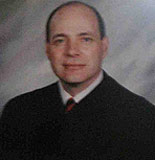4/30/2008
Ohio Court Tosses Laser Speed Gun ReadingsOhio appeals court throws out unproven lidar speed gun evidence.

An appellate court on Monday ruled that key evidence used in Ohio speed traps was not admissible. With millions in local government revenue at stake, the Ohio Court of Appeals for the Ninth District found the accuracy of laser-based speed guns (lidar) to be unproven. The decision could inspire challenges to laser tickets throughout the state.
The present case began when Ohio State Trooper Dennis Matulin hid along the median of Interstate 71 with an LTI 20-20 laser speed gun waiting for the device to indicate that someone had exceeded the speed limit. Matulin charged that when Donald Miko's semi truck passed his location, the lidar gun displayed a reading of 67 MPH. The limit for trucks on the road is 55 and for cars 65.
At trial in the Medina County Municipal Court, Miko objected that the trooper's LTI 20-20 had never been proved reliable in an Ohio court of law. The prosecutor merely asserted the contrary. The magistrate quickly agreed, saying, "Yes, the court had done so by prior judgment entry." The court imposed a $100 fine and two points against Miko's commercial driving license. Appellate Judge Clair E. Dickinson scolded the lower court for violating the rule that a county court must publish, or report, a "judgment entry" used for the purpose of taking judicial notice.
"Nobody has brought a reported decision of the Medina Municipal Court considering the accuracy of the LTI 20-20 device to this court's attention," Judge Clair E. Dickinson wrote. "The trial court, therefore, was not authorized to take judicial notice of the scientific accuracy of the LTI 20-20 laser device by Rule 201(B)(1) of the Ohio Rules of Evidence."
Dickinson went on to point out that the unreported case which the Medina court cited to convict Miko did not include any required testimony from expert witnesses. As a result, the court overturned Miko's conviction.
"In the absence of a reference to a case in which the trial court determined, based on scientific testimony it heard in that case, that the LTI 20-20 laser device is scientifically accurate, the trial court was not authorized... to take judicial notice of its accuracy," the appeals court concluded. "Inasmuch as the trial court was not authorized to take judicial notice..., it erred by doing so."
The British media has been scathing in its treatment of the inaccuracy of the LTI 20-20 speed gun. The basic operation problem is that handheld laser speed guns must take two separate measurements of distance to generate a speed estimate. If, while taking a speed reading, an officer's hand twitches slightly, the laser beam can "slip" from one portion of a vehicle to another. The extra distance measured in the second reading is then added to the calculation that determines the speed readout. For example, if the speed gun's aim point slips from the windshield to the grill, the speed reading will read 8 MPH too high. London's Daily Mail newspaper, the BBC, and ITV network have each run stories exposing fundamental flaws in the way lidar guns estimate speed.
A full copy of the ruling is available in a 35k PDF file at the source link below.


